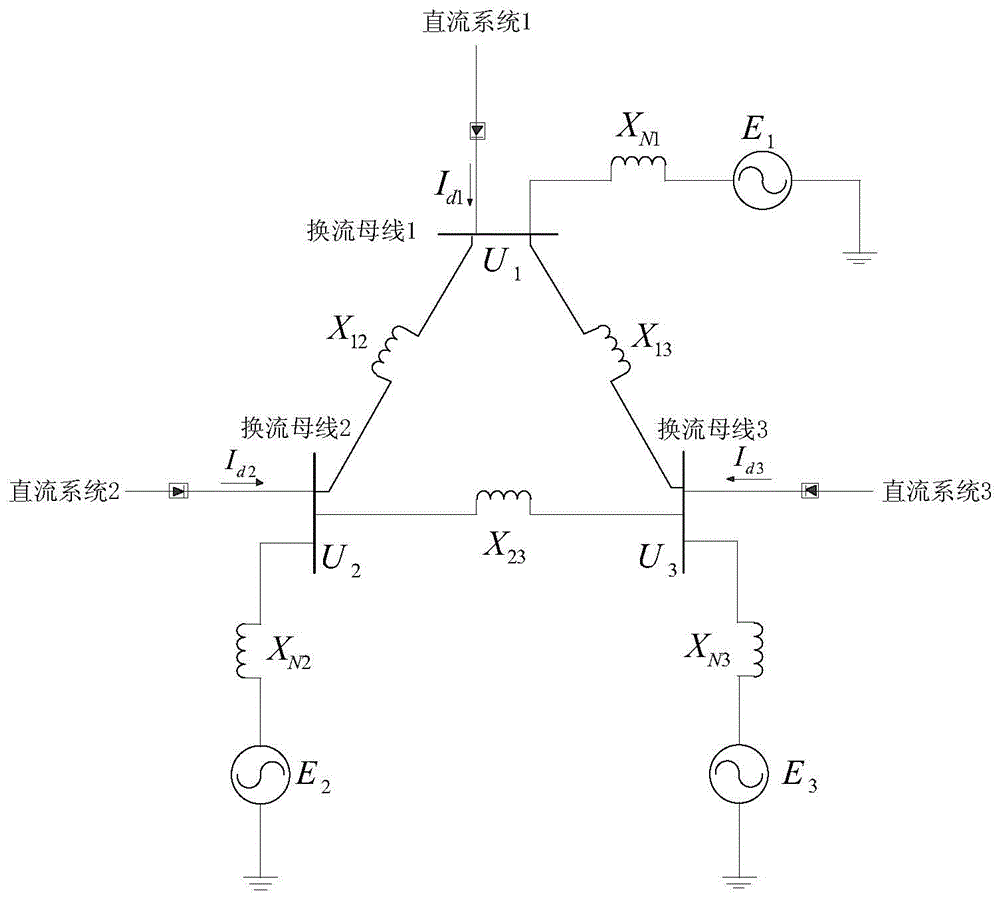Method for determining risk degree of influence on inversion stations of alternating-current junction stations
A technology of inverter station and risk degree, applied in the direction of power transmission AC network, etc., can solve problems such as short electrical distance, system instability, voltage drop, etc.
- Summary
- Abstract
- Description
- Claims
- Application Information
AI Technical Summary
Problems solved by technology
Method used
Image
Examples
Embodiment Construction
[0027] Preferred embodiments of the present invention will be described in detail below with reference to the accompanying drawings, so as to better understand the purpose, features and advantages of the present invention. It should be understood that the embodiments shown in the drawings are not intended to limit the scope of the present invention, but only to illustrate the essence of the technical solutions of the present invention.
[0028] the term:
[0029] Risk degree: the probability of commutation failure in the inverter station.
[0030] General Risk: 20% probability of commutation failure.
[0031] Very high risk: 80% probability of commutation failure.
[0032] Commutation failure: It is a common fault in the DC transmission system. The commutation voltage drop and the resulting DC voltage drop and DC current rise on the inverter side, and the zero-crossing drift of the commutation voltage during asymmetrical faults will all affect the occurrence of commutation ...
PUM
 Login to View More
Login to View More Abstract
Description
Claims
Application Information
 Login to View More
Login to View More - R&D
- Intellectual Property
- Life Sciences
- Materials
- Tech Scout
- Unparalleled Data Quality
- Higher Quality Content
- 60% Fewer Hallucinations
Browse by: Latest US Patents, China's latest patents, Technical Efficacy Thesaurus, Application Domain, Technology Topic, Popular Technical Reports.
© 2025 PatSnap. All rights reserved.Legal|Privacy policy|Modern Slavery Act Transparency Statement|Sitemap|About US| Contact US: help@patsnap.com



